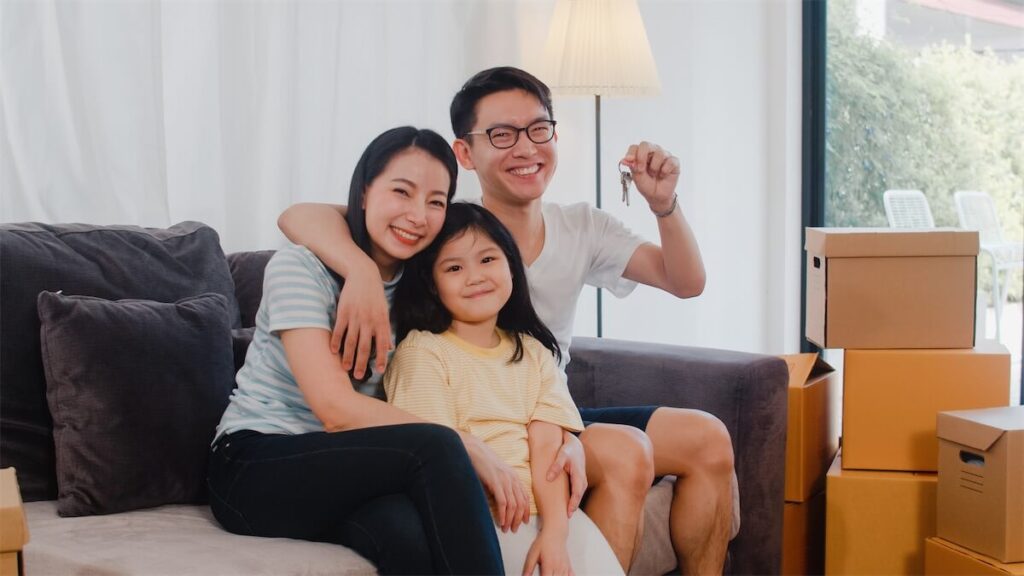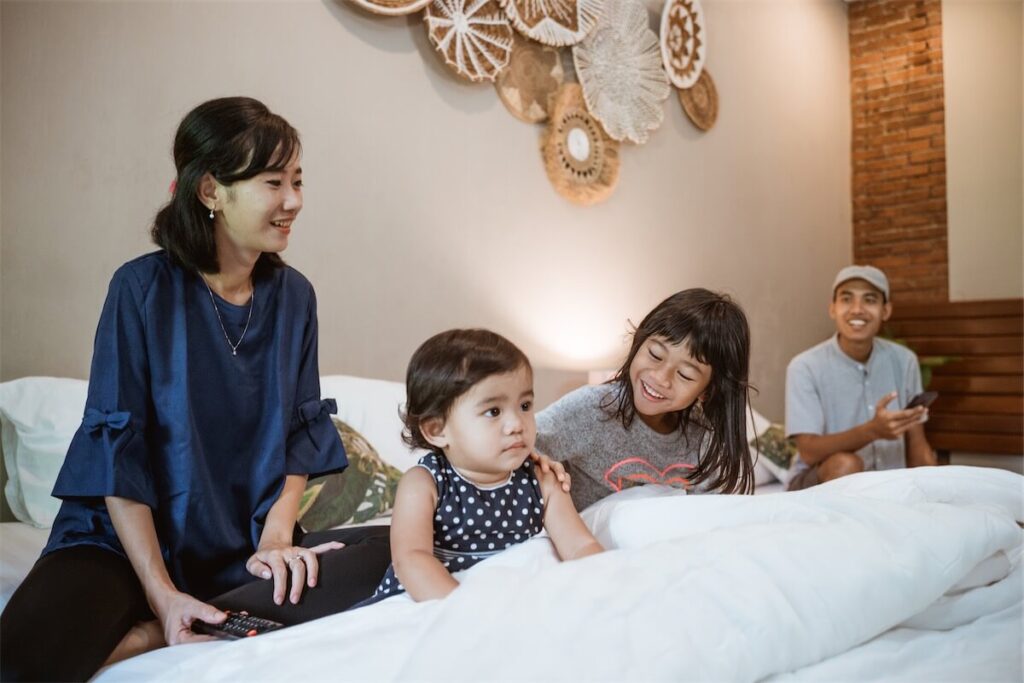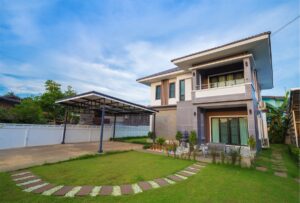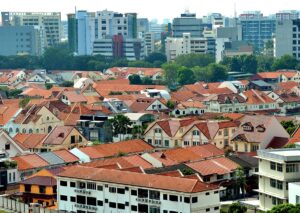Today, buying an HDB BTO is seen as a mandatory milestone that every young couple in Singapore needs to unlock. And as with many other milestones, there’s a lot of pressure that comes with buying an HDB BTO. It’s difficult to decide where and how to start, let alone the biggest factor: getting a home loan in Singapore.
So here’s the ultimate BTO crash course you’ve been needing. We’ve simplified the steps for you and detailed how you should go about the entire process — from the steps you’ll need to take to make your application and get your bank loan, right up till the day you’re ready to set foot into your new home.
Let us walk you through this journey, one step at a time. It’s easier to understand than you might think.
First things first: Are you eligible for an HDB BTO?
With over 80% of Singapore living in HDB homes, it’s no surprise that HDB BTOs are so vastly popular. HDB BTO homes are seen to be a subsidised public housing option that allows you to use grants in addition to that.
These homes give plenty of value. So it’s only natural that you might need to meet certain eligibility criteria just to apply for one. Thankfully, the eligibility criteria for BTOs are relatively straightforward.
- Are you Singaporean?
At least one person involved in the BTO application needs to be Singaporean. In addition to that, at least one other person applying (if applicable) needs to be Singaporean or a Permanent Resident here.
This can include your spouse, children, parents, and siblings, if you’ve got any. For divorced or widowed applicants, this can also include any children under your legal custody.
- Are you earning too much?
HDB BTO flats have an income ceiling of S$14,000. This means that if your total monthly household income is above S$14,000, you’re making too much money to be eligible for one.
With that said, there are some varying circumstances. Have a look at the table below.
| Flat Type | Income Ceiling (Default) | Variable Income Ceiling |
|---|---|---|
| 2-room flexi flat | S$7,000 | S$14,000 for short lease flats |
| 3-room flat | S$7,000 | S$14,000, depending on which flat project you’re balloting for. |
| 4-room flat or bigger | S$14,000 | S$21,000 if you’re buying the flat as an extended or multi-generation family. |
Income assessments will be conducted when you submit your payslips and any other
relevant documents, which you’ll be asked for when you apply for a BTO home.
- How old are you?
Just like many other legal undertakings, you must be at least 21 years old before you’re allowed to apply for a BTO.
If you’re below 21 but above 18, you can apply for an HDB BTO under the Fiancé/Fiancée Scheme, as long as you’ve got written consent from your parents or guardians.
And if you’re below the age of 18, you’ll need to submit a Special Marriage Licence from the Ministry of Social and Family Development during the flat selection appointment.
- Do you own any property in Singapore?
If you own any residential properties at all, whether in Singapore or overseas, or if you’ve disposed of a property over the last 30 months, you won’t be eligible to apply for a new BTO flat at all.
If you’re applying for an HDB BTO and have an existing HDB flat, you will need to sell the existing HDB flat 6 months from key collections of the BTO.
- Are you married?
It’s no secret that you need to be married to BTO in Singapore if you’re below the age of 35.
If you’re applying for an HDB BTO with your soon-to-be spouse and want to apply for additional CPF grants, you need to register your marriage before taking possession of your flat.
If you’re a single citizen aged above 35, you’ll only be eligible for 2-room flats in non-mature estates. You can also apply for a home with up to 3 single citizen co-applicants.
Congrats, you’re eligible. Next, keep your fingers crossed and ballot for your BTO!

With BTOs being so hotly contested, you’ll need to ballot for one. Just like you’d do for NDP tickets, or to get your child into a primary school of your choice.
Keep yourself well aware of upcoming BTO sales launches for the year by checking the HDB Flat Portal regularly.
Generally, HDB announces upcoming BTO projects 6 months prior to their launch.
These announcements will also include the location of the sales launches, which means you’ll have some time to plan for a location that you want.
If there’s a launch that you’re interested in, you can pay S$10 to ballot for it during the application window. Then, you’ll just have to keep your fingers crossed and hope you’re lucky.
In 3 weeks, you’ll know whether your application was successful or not. Who knows, you might even be one of those fortunate people who succeed on their first try!
With that said, there are also some ways in which you can increase your chances of application, especially if you’re a first-time applicant.
Normal public applicants get 2 chances. If you’re under the Married Child Priority Scheme and live near your parents or a married child, you’ll get 4 chances.
And if you’re under the same scheme and live with your parents or a married child, you’ll get 6 chances in total.
Time to get your HLE letter or your AIP for your home loan in Singapore!

If you got a queue number, give yourself a celebratory pat on the back. Your queue number indicates the order that you’ll get to pick your flat in. So if your queue number is 99 and there are exactly 100 units available in the flat of your choice, then it’s likely that you’re going to get a flat!
Now it’s time to get into the nitty-gritty bits of planning your finances, especially regarding home financing solutions. A big part of this decision will involve choosing between an HDB loan and a bank loan.
It all depends on which option might suit your needs better.
An HDB loan is a popular choice for first-time home buyers. That’s because HDB loans don’t require any cash down payments. However, HDB loans have an interest rate of 2.6% for the entire duration of your loan.
But if you’ve got enough savings, you might consider a bank loan instead, as they typically have lower interest rates. Nonetheless, both these home loans in Singapore will need you to get loan approval before you can book your flat.
Once you’ve got all your loan documents in order, only then can you sign your lease agreement.
If you’re taking an HDB loan, you’ll need to get an HDB Loan Eligibility (HLE) letter. This letter will indicate how much HDB is willing to give you a loan for.
And if you opt for a bank loan instead, you’ll need to get the equivalent of an HLE letter from the bank. This is called an Approval In Principle (AIP).
There are plenty of loan options for you to pick from, and you should make sure to choose wisely.
A mortgage broker can help you with this decision, with an overarching view of all the mortgage loans in Singapore.
READ: Should you take up a home loan through a mortgage broker in Singapore?
How’s your eligibility determined for a home loan in Singapore?
Your eligibility to borrow money for a mortgage loan in Singapore will be determined by a few factors.
When you’re being assessed for the loan, you might be asked to submit your payslips from the last 3 months.
Suppose you’re a self-employed person and your income stream is not usually salaried. In that case, you’ll need to submit your latest Notice of Assessment (NOA) from your income tax filings and some additional documents.
After that, the following factors might come into play:
| Factor | What is it? |
|---|---|
| Loan to Value Limit (LTV) | Maximum loan amount that can be issued to you for the property you’re looking to get. Usually, this is a percentage of the property’s market value. For HDB loans, this can go up to 90%. |
| Mortgage Servicing Ratio (MSR) | MSR refers to the portion of your monthly income that’s going to go towards repaying your property loans Usually, this amount is capped at 30%. While it may not be as high as you’d like, think of it as a way to live a comfortable life without financial strain from your home loan in Singapore. |
| Total Debt Servicing Ratio (TDSR) | The percentage of your monthly income that goes towards all your monthly debt repayments. This includes all the debt you might have, whether it’s the loans you took on a car, student loans, and whatever else. Usually, your TDSR amount should be less than or equal to 60% of your monthly income. |
Find out more about TDSR and MSR here.
Overall, these factors will help HDB or the bank decide your ability to repay your loan. They give an overarching view of your income, and your financial standing.
Check out what happens if you fail your TDSR here.
When you finally get your HLE or AIP that gives you more detail of your home loan eligibility, you’ll also get details on your repayment period and the monthly instalments you’ll need to pay.
As you make your calculations, also remember to include interest rates as part of it.
Across your loan repayment period, interest rates can add a substantial amount to how much you’ll have to repay for your home loan in Singapore.
If you’re having trouble working out the finances or simply don’t have time, consider speaking to a mortgage broker!
You get to select your BTO flat. Then, you’ll need to pay an option fee.
As mentioned after step 2, you should have a queue number for your HDB flat by now. If your queue number is way above the number of units, you can be prepared to ballot for a BTO again.
If you do get to book your flat, you can make your way down to HDB Hub. Make sure to bring your IC, any relevant income documents.
If you’re taking an HDB loan for your home loan in Singapore, make sure to bring your HLE letter with you too.
After you’ve selected your unit, you can make your purchase official by paying an option fee while you’re there.
The option fee for a 2-room flexi flat is S$500. For a 3-room flat, the fee is S$1,000. And for a flat that’s 4 rooms or larger, it’s S$2,000.
This point is also when you should apply for your CPF housing grants.
Ensure that you’ve got any of the relevant documentation with you. This way, you’ll get a good view of how your home financing solutions are helping you.
Sign your lease agreement and make your downpayment within 4 months of booking your flat.
In the 4 months after you’ve booked your flat, you should make sure that all your loan arrangements are well in order.
As you ready to sign your lease agreement, be aware that you’re going to have to pay your downpayment, stamp duties, and legal fees.
Find out more about property stamp duty in Singapore here.
Depending on whether you’re taking an HDB loan or a bank loan, your downpayment may vary. If you’re taking an HDB loan, you can pay 10% of your purchase price using either cash or your CPF.
If you’re taking a bank loan instead, you’ll have to pay 25% in downpayment, of which 5% has to be in cash. The remaining 20% can be paid for with your CPF.
With that said, it’s worth noting that you can only use your CPF within specified limits if you’re taking a bank loan.
For couples in their 20s, the option of staggering your downpayment is available with the Staggered Downpayment Scheme. This allows you to pay your downpayment in two instalments.
Under the Staggered Downpayment Scheme with an HDB loan, you can make the first 5% of your downpayment when you’re signing the lease agreement.
Then, you can pay the remaining 5% when you’re collecting the keys to your new home and sign the Terms of Agreement.
With a bank loan, the Staggered Downpayment Scheme varies a little bit.
Either way, the Staggered Downpayment Scheme gives you a decent amount of time before you’ll need to finish paying your downpayment. This is because it can take between 3 to 4 years till your new BTO home is ready for key collection.
And with COVID-19 delaying the construction of many BTO projects, you may even have longer downtime before your apartment is ready for key collection.
Meanwhile, you might need to consider some alternative housing options until your BTO home has completed construction.
It’s finally time to collect your keys.

You probably feel like the day would never come! Well, when it finally arrives, you’ll get to collect your keys after you’ve worked your way through plenty of paperwork and legal documents.
When you finally get to hold your keys in your hands, take a moment to revel in all your emotions and remind yourself of the feat you’ve achieved.
When you go to your new home, make sure you do so in the daylight, because there won’t be any lights installed yet. Make sure to check your home for defects and report them to HDB within 7 days.
You’re also going to want to have some basic things on hand to make sure your visits to your new home are comfortable. Think measuring tape, foldable chairs for seating, a torchlight, and some toilet paper.
There’s only so much we can tell you to bring for now, but you’ll get a better sense of your needs once you’re in your new home.
As your visual plans come to life, your dusty, empty canvas of a unit will become the dream home that you’ve waited all this time for.
The biggest part of an HDB BTO commitment? A good home loan in Singapore.
The process of getting an HDB BTO can be long and arduous. But if it makes you feel any better, the process is not as complicated as you think.
However, your new lifelong purchase also comes with a financial commitment that you’ll take a large part of your life to pay off. The most important decision you’ll have to make with buying a new home is picking the right home loan.
A home loan that’s made just for you, with interest rates and commitments that favour where you and your family are at in life.

At FinanceGuru, it’s a priority for us to make sure that you’re able to live your life to the fullest in your new home, especially in the years to come.
And to do that, you’ll need to feel comfortable financially.
With our expertise in home loans and our access to just about every package available in Singapore, why not consider letting us address all of your financial considerations?
As a mortgage broker in Singapore, we’ll make sure there’s no part of the process that catches you off guard. We know about the relevant schemes, payment types, and home types that might best fit your needs, no matter the situation.
Make your BTO journey the best one possible by making the best of your home loan. Get a non-obligatory assessment and loan product recommendations today.








